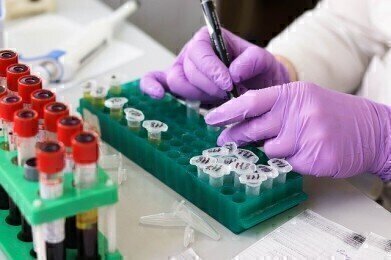Laboratory products
How is Science Guiding Lockdown Measures?
May 05 2020
Since the COVID-19 outbreak was declared a global pandemic by the World Health Organisation (WHO) on March 11, governments have been rallying to flatten the curve by introducing community lockdowns and strict social distancing measures. The drastic measures are undoubtedly saving lives and the policy makers behind the calls say science plays a critical role in guiding the decision.
The all-important reproductive rate of transmission
In the same way science guided governments on enforcing the lockdowns, it will also help determine when to lift social distancing measures. In a recent meeting held by the Parliament's Science and Technology Committee, a group of leading scientists were questioned on their attitudes towards the COVID-19 restrictions.
One area they universally agreed on was that to lift the lockdown the COVID-19 outbreak in the UK needs to be under control. This means the reproductive rate of transmission needs to fall below one, i.e. on average every person with the virus only infects one additional person. According to some scientists, the latest deaths and hospitalisations data suggests the UK has already reached this milestone. Sir Patrick Vallance, the government's chief scientific adviser, says that while this may be true in a community context, some hospitals and care homes are still high risk with a potential reproductive rate of transmission above one.
For governments to confidently lift lockdowns science insists the low reproductive rate of transmission trend must be solid. Experts also stress the importance of increasing testing and tracking so if another outbreak does occur it's easier to manage.
Clashing opinions
Unsurprisingly, not all the data aligns. For example, while some experts say school closures are unnecessary, others insist they're essential. Professor Neil Ferguson, a British epidemiologist and key health advisor to the government, says the closure of schools coupled with "intense social distancing" is one of the most effective ways to quarantine individual households and curb community spread. The view is different from an economic perspective, with schools allowing parents, and frontline health employees, to work from home or in the field.
The severity of COVID-19 lockdowns has also been criticised by some experts who claim governments have unnecessarily crippled national economies in the name of public health. For example, prominent University of New South Wales economics professor Gigi Foster says Australia would have been better off enduring a "very extreme epidemic" rather than deal with the fiscal aftermath of the lockdown.
Want to know more about the aftermath of COVID-19? 'Export experts talk Corona Virus' offers expert scientific insight from Jacqueline Balian on behalf of Gambica Trade Association.
Digital Edition
Lab Asia 31.6 Dec 2024
December 2024
Chromatography Articles - Sustainable chromatography: Embracing software for greener methods Mass Spectrometry & Spectroscopy Articles - Solving industry challenges for phosphorus containi...
View all digital editions
Events
Jan 22 2025 Tokyo, Japan
Jan 22 2025 Birmingham, UK
Jan 25 2025 San Diego, CA, USA
Jan 27 2025 Dubai, UAE
Jan 29 2025 Tokyo, Japan



















